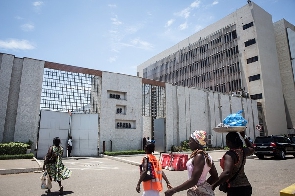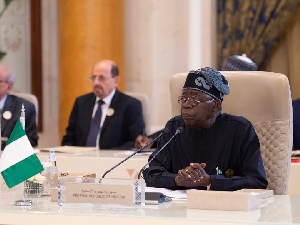The latest data released at the weekend by the Bank of Ghana’s Monetary Policy Committee reveals the strain that Ghana’s external sector has been subjected to by the global economic ramifications of the COVID-19 outbreak.
Ghana’s merchandise trade surplus declined by over US$200 million in 2020, falling to US$2,015.4 million last year from US$2,256.9 million in 2019. This was a major cause of a halving of the overall balance of payments position to US$675.73 million by the end of 2020, from US$1,340.59 million a year earlier.
The situation could have been worse. Over the corresponding period, Ghana’s capital and financial account balance also declined from U$3,067.6 million to US$592.5 million.
However on the upside, the current account deficit narrowed from US$1,864.0 million as at the end of 2019 to US$1,199.2 million a year later, largely as a result of improved inward remittances last year, a trend that still has economic analysts somewhat baffled considering the unusual circumstances last year because of the coronavirus outbreak.
No-one is complaining though; the slimmer current account deficit and its resultant curtailing of the decline in the balance of payments position enabled Ghana’s Gross International Reserves to rise to US$8,624.4 million, up from US$8,418.1 million a year earlier.
This is still close to the record high GIR of US$9.9 billion reached in March 2019 following that year’s Eurobond issuance. This was enough to cover 4.1 months of imports by the end of 2020, up marginally from the 4.0 months import cover available by the end of 2019.
But here too the coronavirus-induced strains are showing through – this import cover is down from the 4.3 months as at the middle of 2020. Furthermore, the increasing debt servicing obligations are also taking a toll with net international reserves having fallen to GHc4,559.5 million by the end of 2020 down from GH¢5,191.9 million a year earlier.
Nevertheless, Ghana’s external position, coupled with the brilliant introduction of forward foreign exchange sales to establish efficient exchange rate price discovery derived from economic fundamentals rather than speculative trading driven by deliberate positions taken against the cedi by currency professional speculators, have combined to stabilize the cedi.
Last year the cedi experienced a record low depreciation against the United States dollar of barely 3.5 percent despite the adverse effects of COVID 19 on Ghana’s exports and the customary inordinate politically motivated spending in every election year.
In 2020, COVID-19’s outbreak instigated a fall in foreign revenues from the country’s traditional exports to US$14,452.8 million, from US$15,667.5 million in 2020 although the effects of this were ameliorated partly by a smaller decline in imports, from US$13,410.7 million in 2019 to US$12,437.4 million last year.
Nevertheless a spike in inward foreign remittances worked in Ghana’s favour. But most importantly the central bank’s forward forex sales are ensuring that Ghana’s good external sector performance fundamentals – particularly the long term high levels of international reserves – are engendering confidence among forex traders and users alike in the cedi’s stability going forward, at least over the short term.
Through the second half of last year in particular most forward bids made at the fortnightly auctions for delivery over various tenors of up to 75 days were only marginally higher than the spot price at the time of each auction.
Instructively at last week’s second auction for 2021, the bids were even closer to the spot price for US dollars indicating that this confidence is strengthening even further.
On Tuesday last week, the second auction in 2021 of foreign exchange for future delivery, conducted by the Bank of Ghana generated bids that indicate that forex users and their bankers are expecting lower exchange rates than they did a fortnight earlier at the first forward auction for the year.
Generally, the range of bids submitted were marginally lower than those for the first auction, for all future delivery tenors except the longest one – delivery in 75 days time.
Added to the fact that this week’s auction bids, like the previous one were only marginally higher than the spot rate as at the time of the auction, of GH¢5.7587, this indicates that the forex market is not only still confident that the exchange rate will remain more or less stable, but is even more confident of this now than it was a fortnight earlier.
Altogether there were 137 bids last week – one more than the 136 bids submitted a fortnight earlier – and they cumulatively added up to US$129.5 million.
However the central bank kept to its auction calendar and only sold US$50 million although the bid to sales cover of 2.59 times was better than the previous auction’s 2.76 times.
A fortnight earlier, the BoG rejected the higher end bids for most tenors and bidders showed last week that they have learnt the lesson that such bids were too high to match realities.
Consequently, the range of bids for delivery of forex in seven,15, 30 and 60 days respectively were generally lower than those placed at the previous auction. Bids for delivery in 45 days matched those made for that same tenor a fortnight earlier and only bids for 75 days delivery were generally higher than those made previously.
For seven days delivery, 51 bids were made ranging from GH¢5.8000 to GH¢5.8375, cumulatively amounting to US$59 million. The 20 bids accepted ranged from GH¢5.8275 to GH¢5.8300 with US$ 20 million actually being accepted.
For delivery in 15 days, 40 bids amounting to US$39.25 million were submitted, ranging from GHc5.8000 to GH¢5.8525. The 16 buds accepted ranged from GH¢5.8370 to GH¢5.8460 with US$13.5 million actually being sold.
For 30 days delivery, 28 bids amounting US$20.75 million were submitted, ranging from GH¢5.8000 to GH¢5.8500. The 12 bids accepted ranged from GHc5.8350 to GHc5.8500 with US$9 million being sold.
For 45 days delivery, 12 bids amounting to US$7.5 million were submitted ranging from GH¢5.8100 to GH¢5.8310. The six bids accepted ranged from GH¢5.8207 to GH¢5.8310 with US$4.5 million being sold.
For 60 days delivery, four bids were submitted, totaling US$2 million, ranging from GH¢5.7825 to GH¢5.7950. All four bids were accepted at those rates.
Finally, two bids were submitted for delivery in 75 days, cumulatively amounting to US$1 million and both were accepted. Although those bids were higher priced than the single bid for that tenor at the previous auction, in actual terms they were the lowest bids of the entire auction, suggesting bidders expect marginal cedi depreciation over the next two months to be followed immediately thereafter by marginal cedi appreciation.
Altogether the BoG has allocated US$775 million for sale this year through its forward forex auctions, which were introduced in September 2019 and have since been outstandingly successful in stabilizing the exchange rate.
As it did last year the BoG is front loading its sales in order to build up confidence among forex traders and users right from the beginning of the year and thus stem speculative – and consequently inordinate – demand for forex through the year.
In line with this tried and tested strategy the central bank offered US$50 million during the two auctions in January – the same amount as it will offer at each auction in February and March respectively – and then US$25 million at each of two auctions in April and May respectively.
It will then offer US$25 million per auction at each of three auctions in June, two in July, August, September and October respectively, three in November and one in December.
Business News of Monday, 1 February 2021
Source: goldstreetbusiness.com







![Dr. Bawumia [L] and J.A Kufuor Dr. Bawumia [L] and J.A Kufuor](https://cdn.ghanaweb.com/imagelib/pics/583/58304511.295.jpg)









